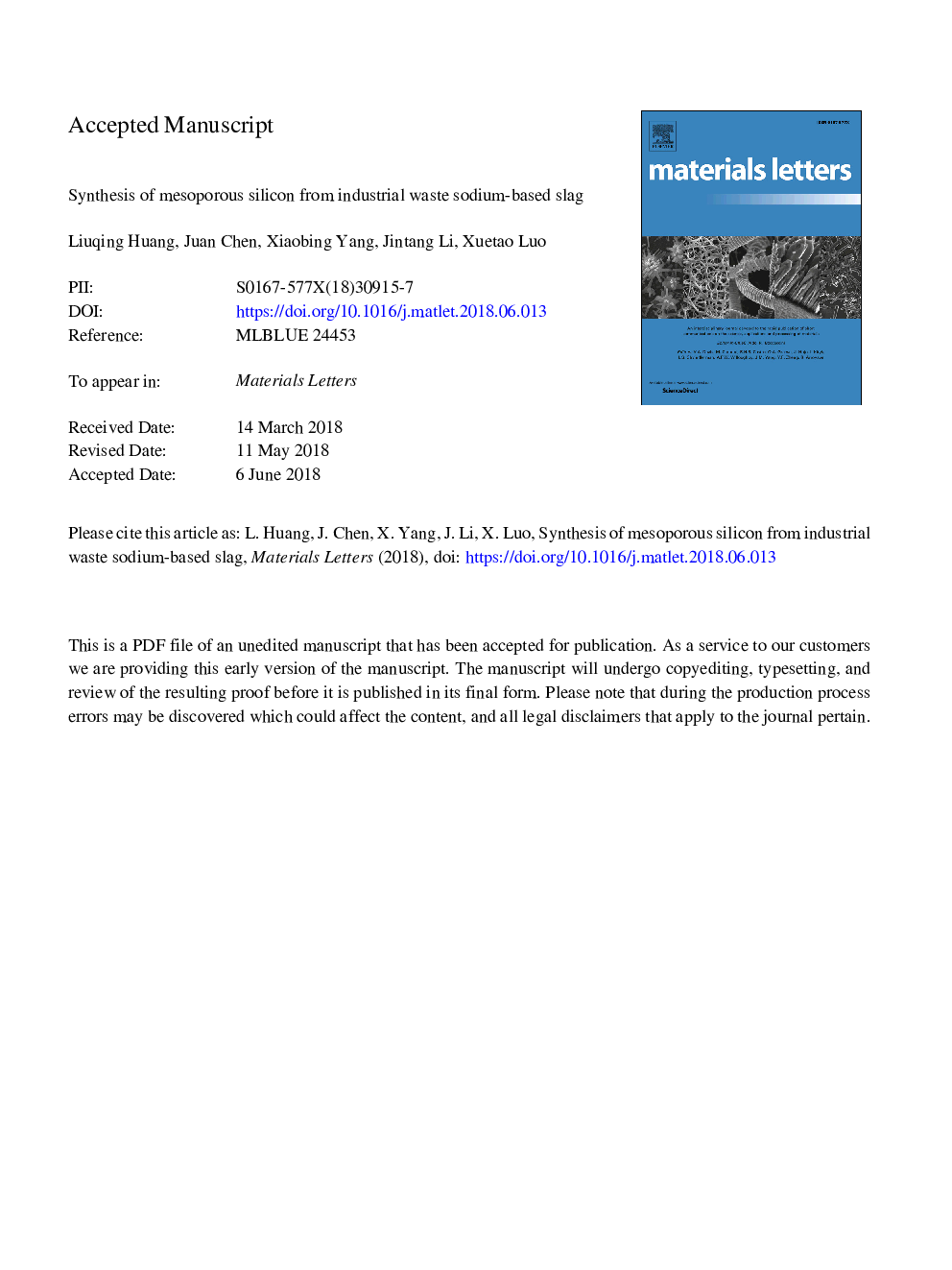| Article ID | Journal | Published Year | Pages | File Type |
|---|---|---|---|---|
| 8012569 | Materials Letters | 2018 | 10 Pages |
Abstract
An increasing amount of waste sodium-based slag was generated during the purification process of metallurgical silicon that causes a posed problem to the environment. Here, a simple but effective approach was developed for the synthesis of mesoporous silicon from waste sodium-based slag. The as-received slag was leached and then calcined to fabricate silica as a precursor. Subsequently, the nanostructured silicon was produced through the reduction of the silica in a magnesium (Mg) vapor. The mechanism suggested that the Mg-containing phases (Mg2Si, MgSiO3, and MgO) were performed as an intermediary agent and facilitated the formation of nano-scale silicon. Nitrogen (N2) adsorption study of the final silicon product showed a BET surface area of 75.5â¯m2/g and a distributional BJH pore size of 3.7â¯nm. Significantly, the N2 absorption capacity of the mesoporous silicon reached 200â¯m3/g. The aim of this study is to recycle the waste sodium-based slag and provide an alternative for the synthesis of mesoporous silicon materials.
Related Topics
Physical Sciences and Engineering
Materials Science
Nanotechnology
Authors
Liuqing Huang, Juan Chen, Xiaobing Yang, Jintang Li, Xuetao Luo,
